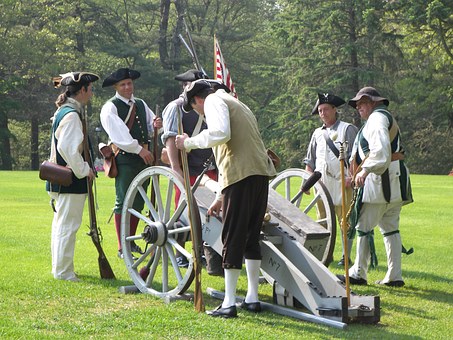The American Revolution was Britain’s Vietnam. Like the Americans two hundred years later, Britain had the larger, better trained army and the largest navy in the world. Just like the Americans in Vietnam, the British repeatedly won battles while failing to win the war.
A perfect example is the Battle of Brandywine in September 1777. (There’s no brandy involved, unfortunately.) After two years, the British had chased the Americans out of Boston, Long Island, New York City and New Jersey. The next big northern city was Philadelphia which was also the home of the Continental Congress. If the British could capture Philadelphia quickly, they might also nab the American government.
Lt. General Sir William Howe was the overall commander of the British forces. Howe knew that Washington had used the early months of 1777 to rebuild and train his motley forces while allowing small units to harass the British, attacking and fading away like the VC in the jungle. Washington avoided a set piece battle which he knew the Americans would lose.
Howe was losing patience, as were his political bosses in London. He placated London by promising to send troops to help Gentleman Johnny Burgoyne take upstate New York so that New England would be split from the other colonies. But he also decided to pursue his own campaign toward Philadelphia. It was Howe’s Vietnam moment because it muddled the British military strategy.
In July, Howe loaded 16,500 men aboard ships commanded by his brother Admiral Richard Howe. The fleet sailed from New York City headed for the Delaware Bay intending to land near Philadelphia. New York City is about 95 miles from Philadelphia. Howe’s troops spent six weeks at sea trying to find a suitable place to land.
Eventually, they sailed into the Chesapeake Bay and came ashore in Maryland. The seasick soldiers headed for Philadelphia hindered most of the way by American skirmishers. On September 11th, they arrived at Chadds Ford, 25 miles southwest of Philadelphia.
Chadds Ford was one of about eight fords on Brandywine Creek. The creek varies between three to five feet deep and would have been relatively easy to wade across. However, the Continental Army was guarding the ford as well as others along a six mile stretch of the creek. The Americans held the high ground which should have been an advantage. Luckily for the British, the American artillery had lousy aim and was of little effect early in the battle.
Seeing Washington’s deployment, Howe decided to split his forces. A force of about 5,000 soldiers attacked Chadds Ford to hold the Americans in place. Meanwhile, the bulk of the British forces marched around the Americans and crossed at another ford, moving into position to hit the Americans in the rear.
The battle began early in the day after the fog lifted so that soldiers could see what they were aiming at. Around 11 am, garbled reports reached Washington that most of the enemy was flanking his position. That’s when Washington had his Vietnam moment.
First, he ordered two of his commanders to move northeast to prepare to defend against the British flanking forces. Then he decided to leave the high ground, cross the creek and attack the British holding force at Chadds Ford, perhaps planning to defeat them before wheeling to face Howe’s main force. Then he canceled both orders and awaited developments.
By 2 pm, Washington finally had confirmation that his position was effectively screwed because Howe was preparing to attack him from the rear. While the Americans were trying to get into a new defensive position, Howe attacked. Luckily for the Americans, their artillery had finally dialed in their aim and provided support to the soldiers.
Around 5 pm the American line began to collapse. Major General Nathanael Greene arrived and threw his troops into the line to stop it from disintegrating. Unfortunately, for the Americans they were trapped between Howe to the north and the British forces at Chadds Ford. Outnumbered and outgunned, the Americans finally retreated.
The Battle of Brandywine cost the British fewer than 600 casualties. The Americans suffered 1,100 casualties and lost 11 cannons. But just like the Viet Cong 200 years later, the Americans absorbed the loss and kept on fighting. The war went on until 1783.
I learned of the Battle of Brandywine while growing up in eastern Pennsylvania and refreshed my recollections with A Guide to the Battles of the American Revolution, by Theodore P. Savas and J. David Dameron (2006). However, there are countless books and biographies about the battles and people in the American Revolution.
=========
Want to receive this blog straight to your inbox? Sign up for my mailing list.
You can also follow me at HerSavvy.com. My column appears the 3rd Tuesday of each month.







